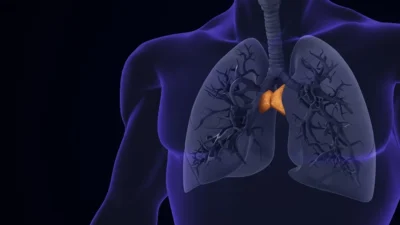Researchers publishing in Aging have found that fibroblast growth factor 21 (FGF21), an apparently beneficial protein naturally produced by the human body, heralds a greater likelihood of death.
Multiple documented benefits
FGF21 plays crucial roles in the human body. Secreted by the liver and many other tissues, it is responsible for glucose maintenance and fat (lipid) metabolism [1]. Mimics of FGF21 have been found to have beneficial effects against diabetes and metabolic issues, such as cholesterol and triglyceride imbalances [2]. Further work has found that it may have even farther-ranging benefits [3], and its administration increases the lifespan of mice [4].
However, previous research has also found that animals that produce more FGF21 over time are more likely to die early [5], making it a potential biomarker of aging [6]. These researchers, therefore, took a step towards reconciling these facts, looking into the details of how FGF21 concentrations are correlated with mortality risk.
More FGF21, more mortality risk
This study was conducted using data from 3,512 people who were at least 50 years old, with a roughly even gender balance. The data was taken from a Polish source (PolSenior2), and the vast majority of participants were of European descent.
Participants were grouped into tertiles by FGF21 quantity and by sex, as women have more FGF21 than men. Men in the highest tertile were, on average, a year older than men in the middle, who, in turn, were a year older on average than men in the lowest. BMI, heart failure, diabetes, and biomarkers of lipid metabolic problems all rose with increasing FGF21. For women, the difference was even more drastic, although this can be accounted for because, in women, FGF21 and age were even more tightly linked.
FGF21, as expected, was linked with mortality, even after correcting for age. In an age-adjusted analysis, people in the middle group were 1.3 times as likely to die than the lower group; people in the higher group were nearly twice as likely. Even in a multivariable analysis that accounted for many other factors, people in the middle group were 1.2 times as likely to die, and people in the highest group were 1.5 times as likely. This molecule, despite being tested as a protector, was directly and independently associated with all-cause mortality.
This is not a fluke; this research is in line with other studies showing an association between FGF21 and mortality [7, 8]. This has led these researchers to carefully consider what might be driving their results. They hypothesize that FGF21 may be produced by the body in response to metabolic problems in an effort to counteract them; they also propose that FGF21 receptors might be being degraded with age, leading to an increase in its production but a decrease in its effectiveness. It is also questionable if FGF21 affects rodents and people in the same way. Further work will need to be done to determine if FGF21 is a druggable target in human beings.
Literature
[1] Chen, Z., Yang, L., Liu, Y., Huang, P., Song, H., & Zheng, P. (2022). The potential function and clinical application of FGF21 in metabolic diseases. Frontiers in pharmacology, 13, 1089214.
[2] Talukdar, S., Zhou, Y., Li, D., Rossulek, M., Dong, J., Somayaji, V., … & Calle, R. A. (2016). A long-acting FGF21 molecule, PF-05231023, decreases body weight and improves lipid profile in non-human primates and type 2 diabetic subjects. Cell metabolism, 23(3), 427-440.
[3] Tan, H., Yue, T., Chen, Z., Wu, W., Xu, S., & Weng, J. (2023). Targeting FGF21 in cardiovascular and metabolic diseases: from mechanism to medicine. International Journal of Biological Sciences, 19(1), 66.
[4] Zhang, Y., Xie, Y., Berglund, E. D., Coate, K. C., He, T. T., Katafuchi, T., … & Mangelsdorf, D. J. (2012). The starvation hormone, fibroblast growth factor-21, extends lifespan in mice. elife, 1, e00065.
[5] Tezze, C., Romanello, V., Desbats, M. A., Fadini, G. P., Albiero, M., Favaro, G., … & Sandri, M. (2017). Age-associated loss of OPA1 in muscle impacts muscle mass, metabolic homeostasis, systemic inflammation, and epithelial senescence. Cell metabolism, 25(6), 1374-1389.
[6] Hanks, L. J., Gutiérrez, O. M., Bamman, M. M., Ashraf, A., McCormick, K. L., & Casazza, K. (2015). Circulating levels of fibroblast growth factor-21 increase with age independently of body composition indices among healthy individuals. Journal of clinical & translational endocrinology, 2(2), 77-82.
[7] Conte, M., Ostan, R., Fabbri, C., Santoro, A., Guidarelli, G., Vitale, G., … & Salvioli, S. (2019). Human aging and longevity are characterized by high levels of mitokines. The Journals of Gerontology: Series A, 74(5), 600-607.
[8] Li, M., Jiang, L. Q., Zhang, M. Y., Liu, S. S., Sawh, R. R. R., Zheng, J., … & Wang, B. (2023). Elevated serum FGF21 is an independent predictor for adverse events in hemodialysis patients from two large centers: a prospective cohort study. Renal Failure, 45(2), 2256414.







